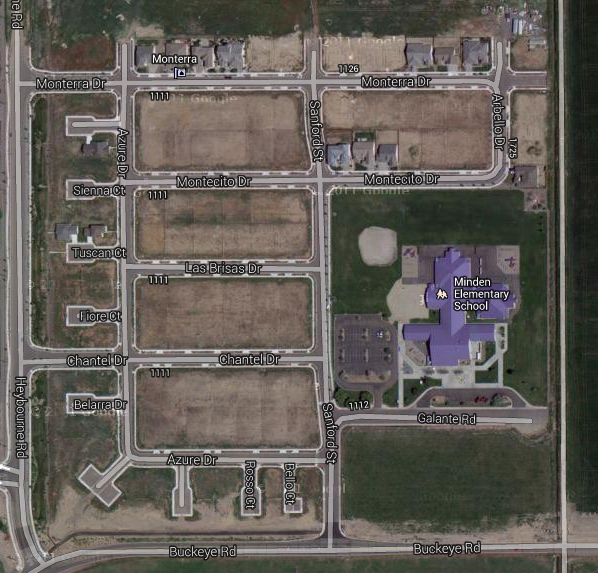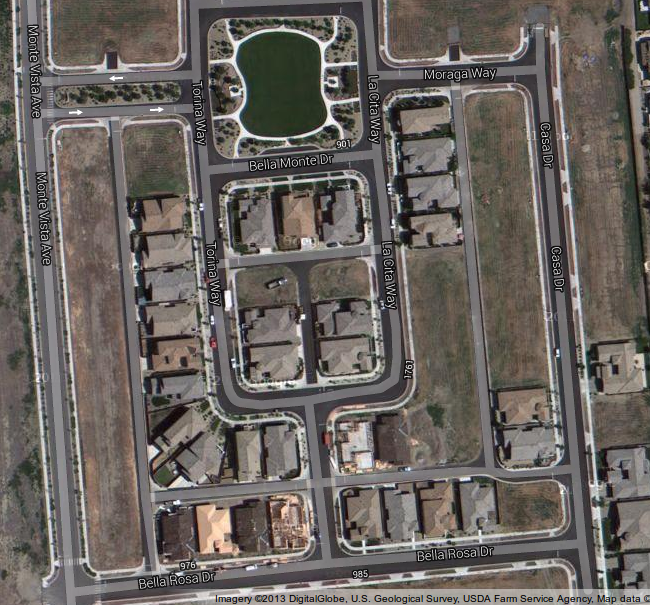[NOTE: I expect to revise this many times – I’m not at HP Discover (maybe next year!), so I am basing this post off what info I have seen elsewhere, I haven’t yet got clarification on what NDA info specifically I can talk about yet so am trying to be cautious !]
[Update: HP’s website now has the info]
I was hoping they would announce the SPC-1 results of this new system, and I was going to wait until that happens, but I am not sure if they have them finalized yet, I’ve heard the ballpark figures, but am waiting for the official results.
The upside is I am on the east coast so I am up bright and early relative to my normal Pacific time zone morning.
I thought it would be announced later in the week but my first hint was this Russian blog (google translated), which I saw on LinkedIn a few minutes ago(relative to the time I started the blog post which took me a good two hours to write), also came across this press release of sorts, and there is the data sheet for the new system.
In a nut shell the 7450 is the system that HP mentioned at the launch event for the 7400 last December – though the model number was not revealed they said
In addition to mixed SSD/HDD and all-SSD configurations across the HP 3PAR StoreServ family, HP has announced the intent to develop an SSD-optimized hardware model based on the 3PAR operating system.
As fast as the all-SSD 7400 was, that was not the “optimized” hardware model – this one is (the one that was mentioned last December). I think the distinction with the word optimized vs using the phrase purpose built is important to keep in mind.
The changes from a hardware perspective are not revolutionary, 3PAR has, for the first time in their history (as far as I know anyway) has fairly quickly leveraged the x86 processors and upgraded both the processors and the memory (ASIC is the same as 7400) to provide the faster data ingest rate. I had previously (incorrectly of course) assumed that the ASIC was tapped out with earlier results and perhaps they would need even more ASICs to drive the I/O needs of an all-SSD system. The ASIC will be a bottleneck at some point but it doesn’t seem to be today – the bottleneck was the x86 CPUs.
They also beefed up the cache, doubling what the 7400 has.
- 4-Node 7400: 4 x Intel Xeon 6-core 1.8 Ghz w/64GB Cache
- 4-Node 7450: 4 x Intel Xeon 8-core 2.3Ghz w/128GB Cache
Would of been nice to have seen them use the 10-core chips, maybe the turnaround for such a change would of been too difficult to pull off in a short time frame. 8-core Intel is not bad though.
The Russian blog above touts a 55% increase in performance on the 7450 over the 7400, and the cost is about 6% more (the press release above quotes $99,000 as entry level pricing)
Throughput is touted as 5.5 Gigabytes/second, which won’t win any SPC-2 trophies, but is no slouch either – 3PAR has always been more about random IOPS than sequential throughput (though they often tout they can do both simultaneously within a single array – more effectively than other platforms).
The new system is currently tested (according to press release) at 540,000 read IOPS @ 0.6ms of latency. Obviously SPC-1 will be less than the 100% random read. This compares to the 7400 which was tested(under the same 100% read test I believe) to run at 320,000 IOPS @ 1.6ms of latency. So a 59.2% improvement in read IOPS and about 62% less latency.
Maybe we could extrapolate that number a bit here, the 7400 achieved 258,000 SPC-1 IOPS. 59.2% more would make the 7450 look like it would score around 413,000 SPC-1 IOPS, which is nearly the score of an 8-node P10800 which has 16 ASICs and 16 x Quad core Xeon processors! (that P10800 requires basically a full rack for just the controllers vs 4U for the 7450 (assuming they can get the full performance out of the controllers with only 48 SSD drives).
The blog also talks about the caching improvements targeted to improve performance and lifetime of the SSDs. The new 3PAR software also has a media wear gauge for the SSDs, something I believe the HP Lefthand stuff got in a year or two ago (better late than never!). The graphics the Russian blog has are quite good, I didn’t want to too shamelessly rip them from their blog to re-post here so I encourage you to go there to see the details on the caching improvements that are specific to SSD).
The competition
This system is meant to go head to head with the all-flash offerings from the likes of EMC, IBM NetApp (not aware of any optimized flash systems from HDS yet – maybe they will buy one of those new startups to fill that niche – they do have an optimized flash module for their VSP but I’d consider that a different class of product which may retain the IOPS constraints of the VSP platform).
However unlike the competition who has had to go outside of their core technology, HP 3PAR has been able to bring this all flash offering under the same architecture as the spinning rust models, basically it’s the same system with some tweaked software and faster processors with more memory. The underlying OS is the same, the features are the same, the administrative experience is the same. It’s the same, which is important to keep in mind. This is both good and bad, though for the moment I believe more good (Granted of course HP had to go to 3PAR to get all of this stuff, but as this blog has had a lot of 3PAR specific things I view this more in a 3PAR light than in a HP light if you get what I mean).
Of the four major competitors, EMC is the only one that touts deduplication (which, IMO is only really useful for things like VDI in transactional workloads)
3PAR is the only one with a mature enterprise/service provider grade operating system. On top of that obviously 3PAR is the only one that has a common platform amongst all of it’s systems from the 7200 all the way to the 10800.
3PAR and IBM are the only ones that are shipping now. Just confirmed from El Reg that the 7450 is available immediately.
None of big four tout compression, which I think would be a greater value add than deduplication for most workloads. I’m sure it’s on all of their minds though, it could be a non trivial performance hit, and in 3PAR’s case they’d likely need to implement it in the ASIC, if so, it means having to wait until the next iteration of the ASIC comes out. There has been gzip compression available in hardware form for many years so I imagine it wouldn’t be difficult to put into the silicon to keep the performance up under such conditions.
The new system also supports a 400GB MLC self encrypting drive (along with other SEDs for other 3PAR platforms as well) – 3PAR finally has a native encryption option, for those that need it.
Who should buy this
This isn’t an array for everyone (nor are the ones from the other big storage players). It’s a specialized system for specific very high performance workloads where latency is critical, yet at the same time providing the availability and manageability of the 3PAR platform to an all SSD solution.
You can probably go buy a server and stuff it with a few PCIe flash boards and meet or exceed the IOPS at a similar latency and maybe less price. If your workload is just dumb IOPS and you care about the most performance at the least price then there are other options available to you (they probably won’t work as well but you get what you (don’t) pay for).
There clearly is a market for such a product though, the first hint of this was dropped when HP announced an all flash version of it’s P10000 about a year ago. Customers really wanted an all flash system and they really wanted the 3PAR OS on it. If your not familiar with the high end 3PAR systems well from a form factor perspective driving 400k+ SPC-1 IOPS on a P10800 vs a 7450 you would probably get a good chuckle out of how much floor space and power circuits are required for the P10800 (power draw would be light on the SSDs of course, but they have hard requirements for power provisioning – most customers would pay per circuit regardless of draw).
I think a lot of this may be in the banking sector, where folks are happy to buy tons of fancy low latency stuff to make sure their transactions are processed in milliseconds.
Fifteen milliseconds may not seem like a significant amount of time—it is literally shorter than a human blink of an eye, which takes 300 to 400 milliseconds. But in the age of super-high-speed computerized trading, Wall Street firms need less than a millisecond to execute a trade.
[..]
All told, Nanex calculated that $28 million worth of shares were exchanged in a short time[15 milliseconds] before the official release of the ISM data.
The skeptics
There have been a lot of skeptics out there wondering whether or not the 3PAR architecture could be extended to cover an all flash offering (you can actually sort of count me in the skeptical camp as well, I was not sure even after they tried to re-assure me, I want to see the numbers at the end of the day). I believe with this announcement they have shown that even more so than the 7400, they have a very solid all flash offering that will, in most cases beat the tar out of the competition, not only on performance, not only on latency, not only on enterprise grade availability and functionality, but on price as well.
Even with this high performance system, these all SSD systems illustrate quite well how a modern storage controller is not able to scale anywhere nearly as well with SSDs as with spinning rust. Most of the SSD offerings have a small number of SSDs before they tap out the controllers. No single controller(that I’ve seen) supports the multi millions of IOPS that would be required to drive many hundreds of SSDs at line rate simultaneously(like regular storage arrays would drive hundreds of disks today).
It is just interesting to me to see the massive bottleneck shift continues to be the controller, and will be for some time to come. I wonder when the processors will get fast enough that they might shift the bottleneck back to the storage media, a decade? Or perhaps by that time everyone will be running on some sort of mature grid storage technology, and the notion of controllers as most of us know them today will be obsolete as a concept. Certainly several cloud providers are already trying to provide grid storage as an alternative, though in most cases, while the cost can be low, the performance is very poor as well (relative to an HP 3PAR anyway).
There is always more work to do (in this case mainly dedupe and compression), and as you might expect HP, along with the other big storage companies are constantly working to add more, I am very excited about what the future holds for 3PAR, really have never been so excited since the launch of the 7000 series last year(as a customer now for almost seven years) and am very pleased with what HP has managed to accomplish with the technology thus far.
Other 3PAR announcements
- 3PAR Priority Optimization is made available now (first announced last December) – this is basically fine grained QoS for IOPS and throughput, something that will be a welcome enhancement to those running true multi tenant systems.
- 3PAR Recovery Manager for Hyper-V – sounds like they are bringing Hyper-V up to the same level of support as VMware.
- As mentioned earlier, Self encrypting drive options are cited on the Russian blog include – 400GB MLC SSD, 450GB 10k, 900GB 10k, 1TB 7.2k 2.5 “
Side note: there are a few other things to write about later, such as the IBM XIV SPC-1, the HP StoreOnce VSA, and probably whatever else comes out at Discover. For sure I won’t get to those today(or maybe even tomorrow, I am on a semi vacation/working week this week).


